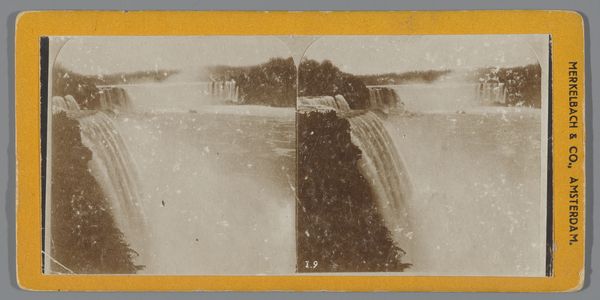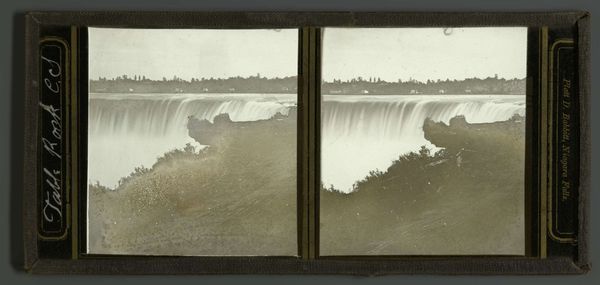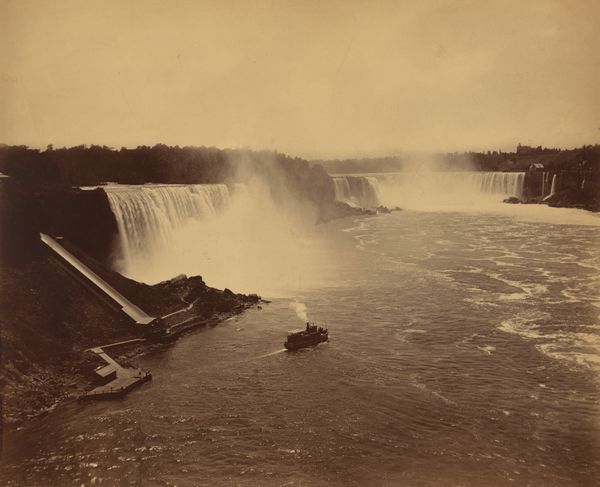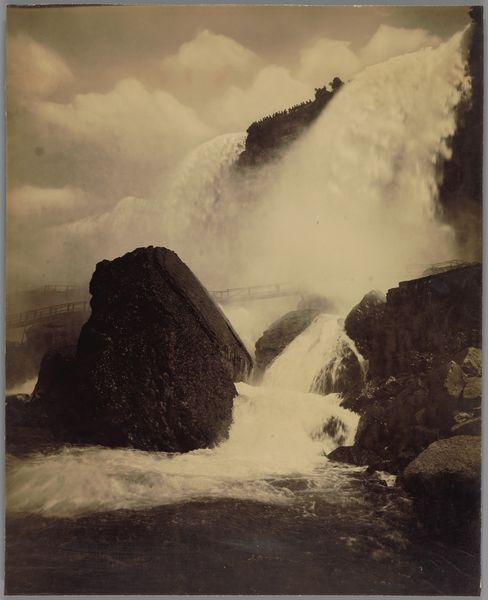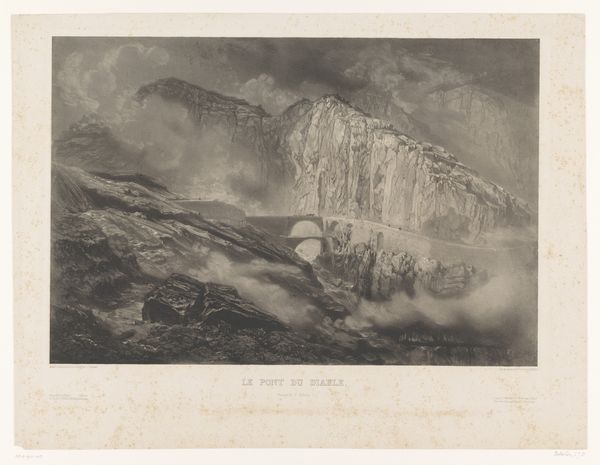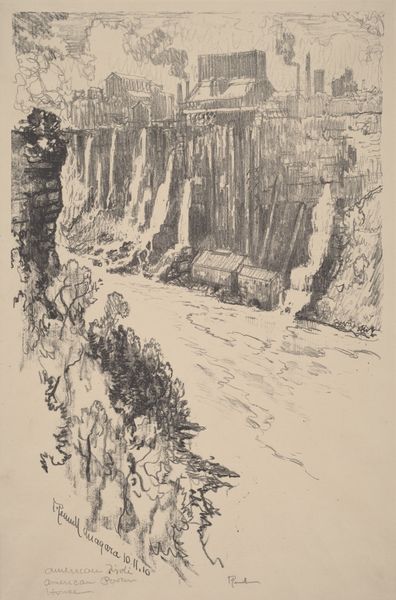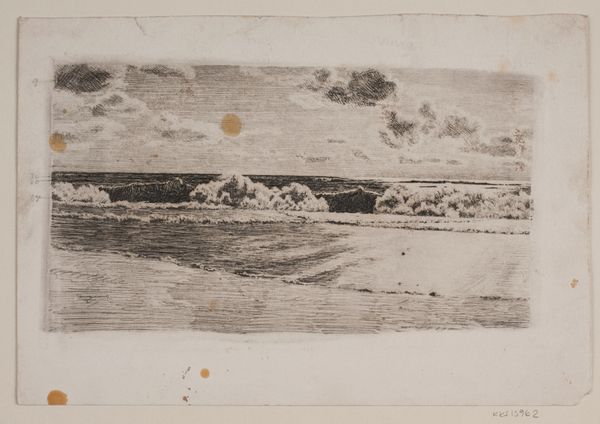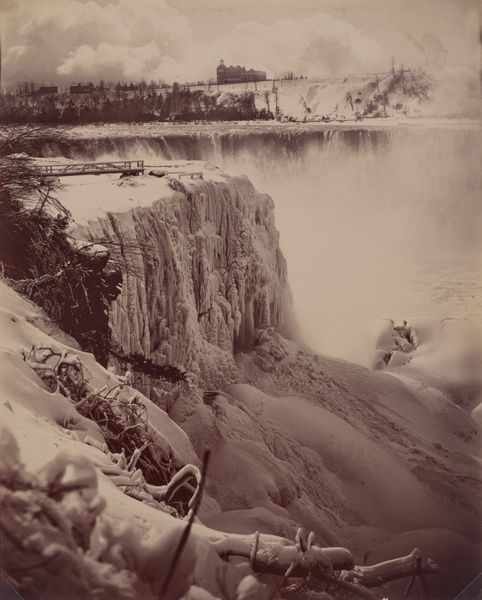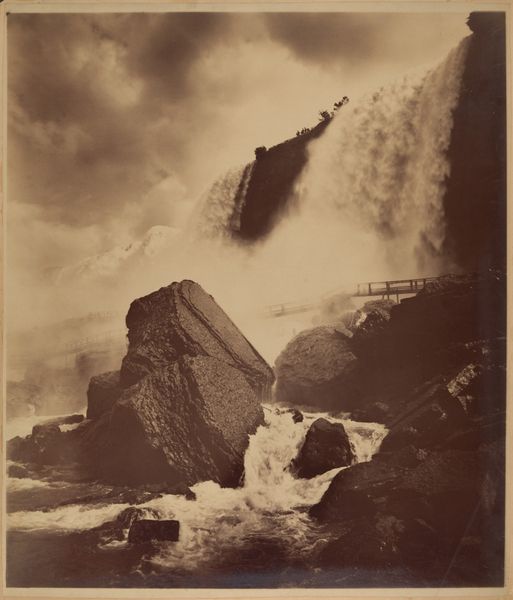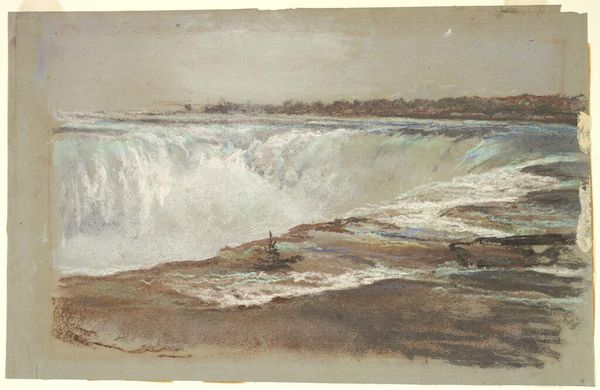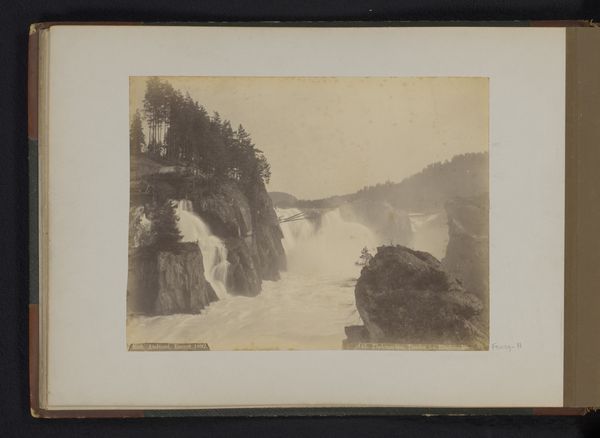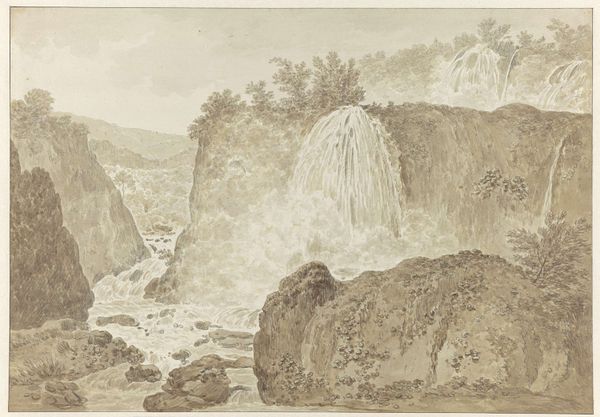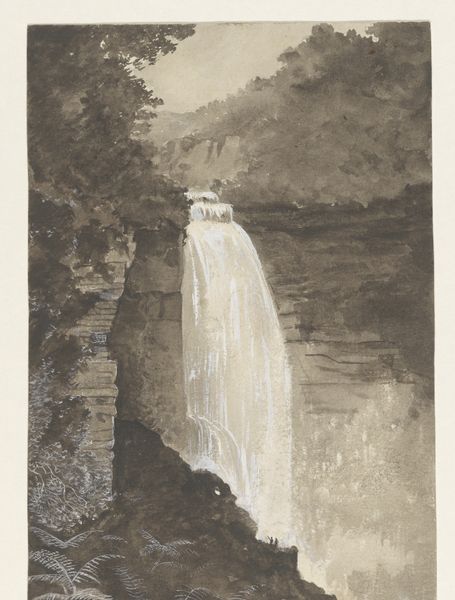
drawing, pencil, graphite
#
drawing
#
landscape
#
pencil
#
hudson-river-school
#
graphite
#
realism
Dimensions: sheet (approximate): 31.5 × 49 cm (12 3/8 × 19 5/16 in.)
Copyright: National Gallery of Art: CC0 1.0
Régis François Gignoux captured Niagara Falls with graphite and white chalk on paper. Born in France, Gignoux later became a member of the Hudson River School, which often depicted grand, romanticized landscapes. Niagara Falls, a site sacred to Indigenous peoples for millennia, became a popular tourist destination in the 19th century. Gignoux’s depiction reflects the 19th-century European gaze on the American landscape. How can we consider the history of colonization and displacement when viewing this image? The sublime, often depicted by these artists, tends to disregard Indigenous perspectives. It also conveniently overlooks the labor and exploitation of marginalized communities, obscuring a more complete narrative. Consider how the landscape is framed, literally and figuratively. How does this viewpoint shape our understanding of the falls and its place within a larger, more complex history? While beautiful, the drawing invites us to consider whose stories are told and whose are left out.
Comments
No comments
Be the first to comment and join the conversation on the ultimate creative platform.
